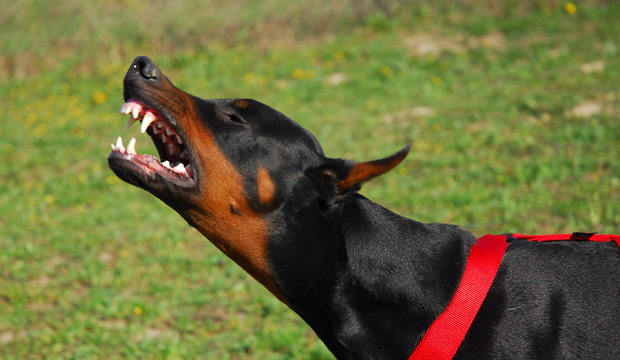
There are a number of reasons why a dog might be unfriendly, but most dogs that are unfriendly have become wary of human beings due to poor treatment or a lack of interaction.
While some dogs will have behavioral or physiological problems that render them dangerous for anyone to approach, it is possible to befriend most dogs if you invest a little time and effort.
1. Learn about the dog’s background
The first is that you might discover that there are reasons why you should avoid the dog; for example, it is one thing for a canine behaviorist to approach a dog with a history of attacking humans, but it is quite another for a layperson to do so.
It could be the dog has suffered abuse at the hands of humans and has developed an innate mistrust of people. Learning this can help you amend behaviors. For instance, you shouldn’t look the dog in the eye or act in any manner the dog might construe as aggressive.
Some dogs may have simply been neglected and not have much experience with human care. For this reason, it’s important to proceed slowly in order to make the dog feel reassured by you presence.
Another reason why learning about the dog’s background can be an asset is that you can tailor your approach to the dog’s personality. For example, if unfriendliness manifests in running away from people, you can focus on stillness when trying to make friends. It takes careful consideration, but learning as much as you can allows you to fine-tune your approach with the dog.
2. Know the signs that a dog is not ready to be approached
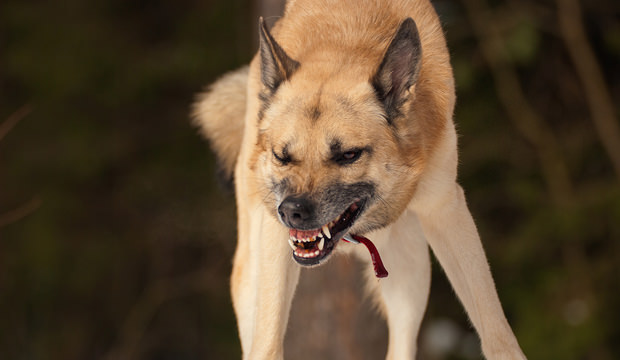
In general, the major signs that you should not approach a dog are growling and showing the teeth (in an expression that almost looks like a smile).
However, the dog may also display clearly flattened ears, and if the dog is frightened then you might notice him cowering, or he may start to salivate more than usual.
If you are trying to make friends, retreating when you notice these warning signs will help to teach the dog that you can be trusted. When retreating, avoid running or doing anything jarring. Move slowly and retreat cautiously. You may find that this calms the dog.
You should avoid moving quickly or doing anything to cause the dog further dismay. The dog may already be quite nervous so it’s you job and best course of action to make it feel as unthreatened as possible.
By moving in too slowly you risk crowding the dog. Since the dog doesn’t know you, it’s apt to see you as a real threat. If it’s threatened by you it isn’t likely to take kindly to your advances.
3. Cultivate a calm state of mind

As a result, you’ll have a better chance of befriending an initially unfriendly dog if you ensure that you are calm and relaxed when you enter the dog’s personal space.
For example, don’t go straight into trying to make friends with your potential canine companion right after a stressful day at work or if you are imagining the dog biting you.
If you find that you simply cannot relax before approaching the dog, you might be better off letting someone else do the work in this case.
When you act from your calm center, both people and animals can be immensely influenced by your demeanor. If you are fearful, the dog will know. If you are calm and confident the dog will note this too. After you’ve learned more about the dog’s history, you might actually feel calmer about dealing with it effectively.
Take time to refresh yourself and unwind from your day before meeting up with a nervous dog. You’ll find that it will go more smoothly when you create an aura of tranquility. You’ll feel better about the experience and so will the dog!
4. Leave the dog alone when it is sleeping or eating
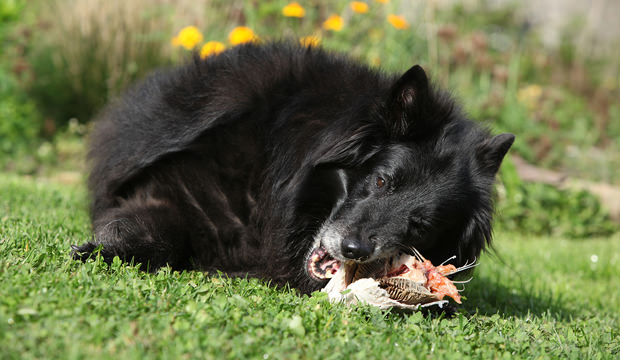
In addition, the issue is further complicated by the fact that some dogs have food aggression problems (responding in a violent manner due to the belief that you are going to remove their nourishment).
Moreover, many dogs don’t like to feel surprised. By waking them or surprising them when they’re eating, they might respond instinctively with aggressive behaviors.
The right time to start your attempts to befriend the dog is when the dog has recently eaten, and is looking fairly relaxed but is not actively trying to fall asleep. At this point, the dog is, perhaps, feeling content. So long as you don’t make it nervous or overtax it, it might respond as you wish.
Whether the dog is aggressive or not, you should never interrupt any dog when they’re eating or sleeping as you can’t be sure how it will respond. By showing how much you respect the dog, you can earn the dog’s trust so that it will not fear you in time.
5. Pretend that you cannot see the dog
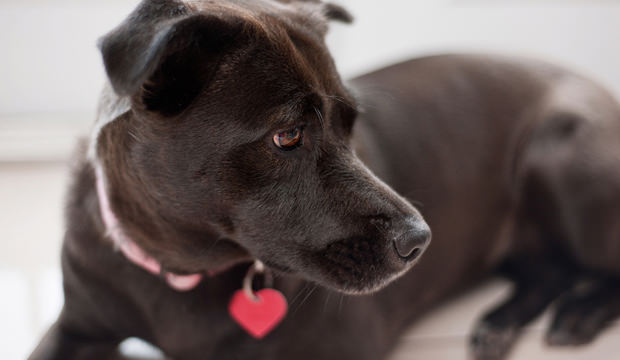
For example, you might choose to sit down on the sofa and begin leafing through a book or magazine, or you could even sit on the floor while looking everywhere but directly at the dog.
You can be aware of the dog and its movements without encouraging an interaction from the get-go. If you’re dealing with a dog that has a past involving abuse, you might need to spend several sessions sharing a room without interacting before the dog will ever feel safe to interact with you.
You aren’t actually ignoring the dog. You’re simply giving it the space it needs to become accustomed to your presence. In time you might actually sense that the dog relaxes. Moreover, the dog might even come up to you.
Every dog is different, but when it comes to aggressive or nervous dogs, you’d do well to give it the space it needs to get comfortable. So, give the dog the room it needs and it won’t take too long before it understands that your presence means no harm.
6. Let the dog come to you
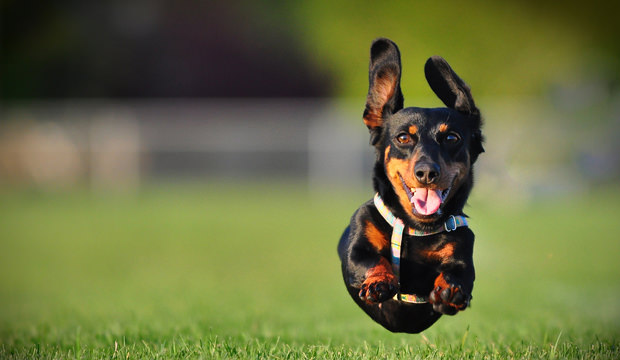
This might seem difficult, but it’s worthwhile in order to build the dog’s trust.
This step of the process requires a great deal of patience, but if you let the dog approach you (instead of forcing the meeting to take place on your terms) then you are far more likely to prove to the dog that you are a trustworthy person.
It is also worth noting that some dogs will be more likely to approach you if you are ‘at their level’ (e.g. sitting or even lying on the floor). Again, avoid looking directly in the dog’s eyes and once it does approach you, don’t do anything to jar it or cause it to feel nervous. For instance, don’t try to hold it or pick it up.
Fast or jerky movements might also startle the dog so remain calmly in place as the dog makes up its mind to come closer to you. If the dog remains uninterested, try to give it some more time to get used to you and your ways.
7. Try not to make any sudden movements while the dog appraises you
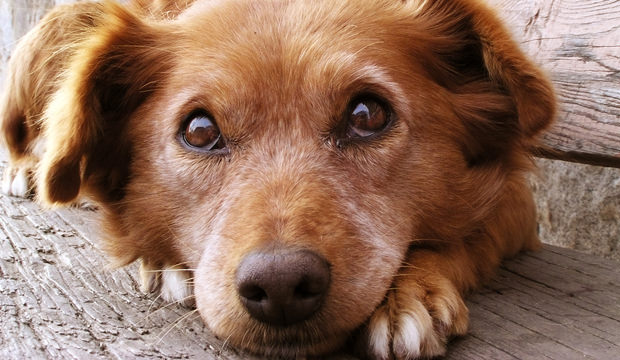
Stay calm during this process, try not to move too much, and maintain a relaxed posture that communicates your non-threatening status.
After a while, it is acceptable to attempt to initiate a reciprocal relationship with the dog, but you should always err on the side of caution when it comes to the length of the ‘sniffing and investigating’ stage.
If you make a move too soon, the dog may run away and you will find yourself back at square one. Make sure your movements are fluid and smooth. Moreover, do not act too quickly as a sudden movement is apt to jar the dog. So long as the dog isn’t behaving aggressively, you might simply let it check you out without doing anything to disturb its investigation.
It might be a good idea to let the dog check you out several times before you initiate a response like trying to pet it. Simply remain patient. You might speak reassuringly to the dog without attempting to physically interact for the first few times it sniffs at you.
8. Start petting the dog in an appropriate way
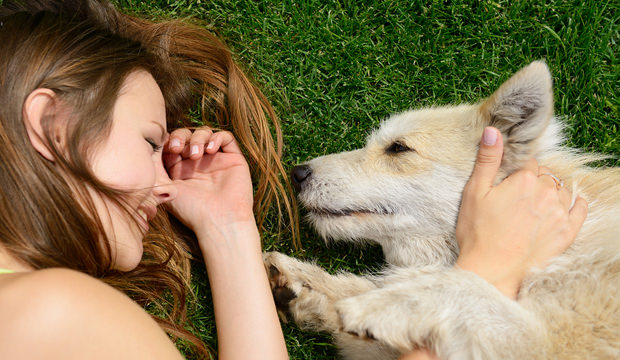
For one thing, a nervous or stressed dog will find a pat on the head to be intimidating.
The best thing to do in most cases is to slowly reach your hand out towards the dog, let him sniff the hand, and then gently stroke his cheek a few times.
It can also help to keep your hands in the dog’s sight so it doesn’t get nervous about what you’re going to do. When you’ve interacted with the dog a few more times and have started to build a real relationship, you can move towards things like belly rubs and head pats, but gentle strokes on the back and cheek are the safest ways of starting.
While you may be thinking of other dogs you owned and their special likes, remember that this dog is completely different and may prefer entirely different interactions.
By proceeding slowly, you can get to know what the dog is comfortable with and what makes it feel nervous. Some dogs may quickly discover that they love to be petted and will begin to trust you more completely once you earn this additional trust.
9. Talk in a kind manner (but watch your body language)
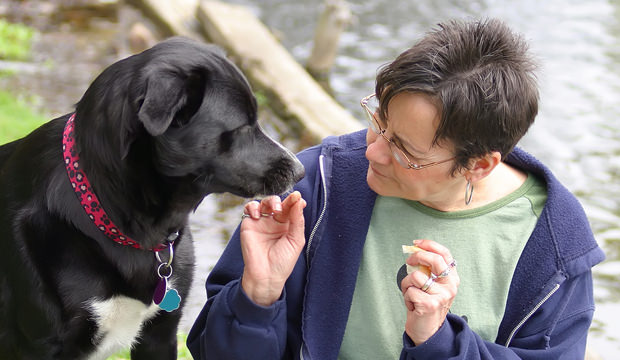
Tell him that he’s a good boy, compliment him and explain your intentions. Keep your voice level and calm. Don’t yell at the dog or cause it any alarm.
Even though he can’t comprehend your intentions when you describe them, he can learn a lot from your tone and inflections, and what you want is to communicate that you are kind, gentle, relaxed and (above all) trustworthy.
However, while it is natural to smile when you are talking to a dog, try to avoid broad grins. Seeing your teeth can make a dog think that you are being threatening, so smiling with a closed mouth is always the best bet.
Also, the dog may be reassured by your calm tone of voice, but if your actions show that you are attempting to come toward it too quickly or to subdue it in some way, it could react negatively. The dog doesn’t know what you are saying, but it can read your body language pretty well. Some can read body language extremely well so be sure your movements match your tone of voice.
10. Share food
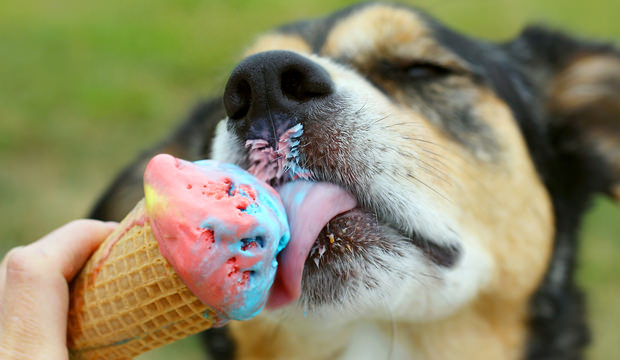
Unless you have reasons to believe that the dog has a particularly serious issue with food (such as the aforementioned problem of food aggression), sharing treats and giving food can be a smart way to cement a friendship with a cautious dog.
The only thing that you need to remember is that not all food is appropriate for dogs. Some human foods (such as grapes, raisins, chocolate candy pieces and onion-based products) can be downright toxic to a dog’s body, so try to stick to dog food and dog treats.
Also, you don’t want to give your dog too many treats. Even so, it can help you build trust and companionship when you provide your pet with healthy treats it enjoys. You’ll get to know in time which treats your dog prefers and which it doesn’t. This is all part of you and your dog getting to know each other. As part of your bonding sessions, treat times can be a fun way to spend time with your dog.
11. Avoid staring
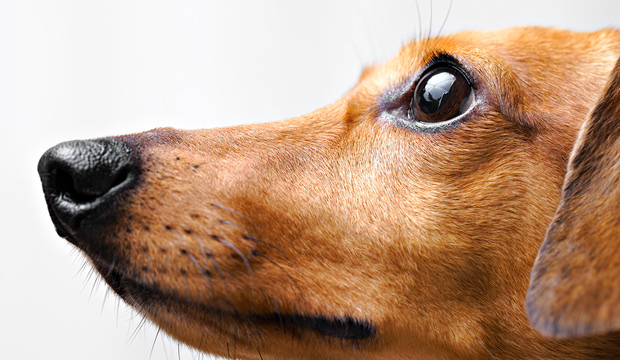
While it is fine to make transient eye contact with the dog, try to do so with ‘soft’ eyes, and make sure that you blink on a regular basis.
Don’t stare straight into your dog’s eyes and certainly don’t do it when you are face to face with the dog as this could encourage aggression.
Staring with wide open eyes and avoiding blinking is a rookie mistake that can easily undermine all of your previous efforts to make the dog want to be your friend. If in doubt, you might be better to avoid all forms of eye contact just to be safe.
It takes time for you and your dog to get to know one another. Just as your dog needs to become comfortable with you, you also need to become better acquainted with your pet. Be sure to guard your actions as far as eye contact because you might not even realize you’re staring at the dog. However, it will notice and may take it as a direct threat.
12. Find ways to play
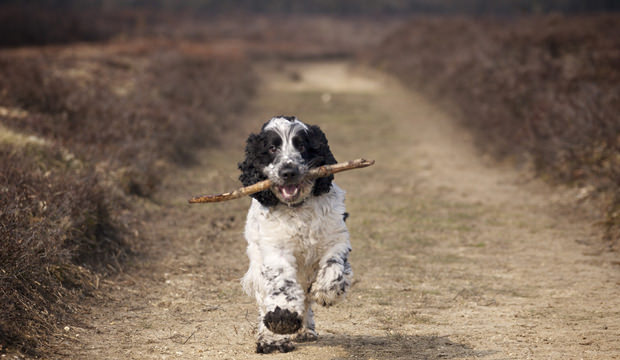
You can start with activities that most dogs like such as throwing a ball for him to chase in the yard or throwing a stick for him to collect.
You might also encourage your dog to sit for its treat or to use toys like Kongs with treats hidden within them. This can encourage your dog to focus and play instead of worry and stress about what you’re up to.
Lots of dogs will also enjoying running with people, so you can try this as well. Once you are true friends, you can graduate to playing with rope toys, but this is ill-advised in the earlier stages in case it results in a bite.
In fact, if your dog doesn’t care to return the stick or ball which is typical among many dogs, be sure to have several on hand that you can use. It is apt to drop the one in order to go and fetch the other.

I did this almost ignoring thing with an Akita at the dog park, and he eventually came close to me and finally licked my hand. I had a feeling this dog never did anything like this, so I told the owner. He told me there was no way his dog licked my hand. Ha! Yeah he did.
I fed my neighbor’s vicious dog some sweet green anti-freeze in a bowl. He quieted right down…
I have lived with at at least one dog in my home since 1973. We have had five German Shepherds since 1988. One was from a breeder, one from a family who put the dog up for adoption, one from the Humane society, two from rescue groups, and one was a street stray. I can say this was the best article I have ever read that deals with how to act around strange or aggressive dogs. If you are near enough for a dog to get to you, and it really wants to bite you, you are going to get… Read more »